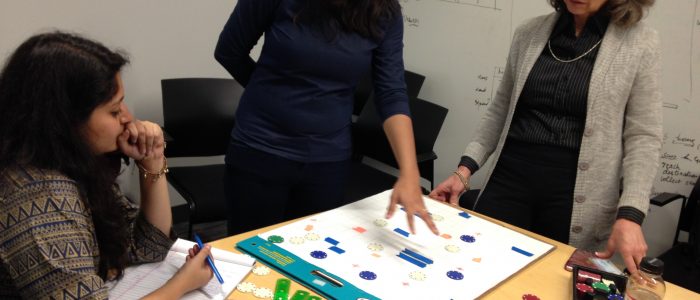Design as Research: Investigating How Designs Spark Student Learning at MIT Design Camps
Curriculum designers not only create educational content and learning tools, they also study how their designs work in schools and classrooms. At the MIT Design Camps hosted in Cambridge, Massachusetts, in October 2016 and January 2017, TISS designers and MIT researchers explored how the design process can illuminate best practices in teaching and learning. CLIx English, math and science teams were introduced to design-based research as an approach to studying educational impact.
Design-based research investigates how curriculum and technology tool design can be improved to advance student learning. In identifying how designs spark student interests, develop their critical thinking and support acquisition of academic skills, important ideas about effective pedagogy are examined, constructed and theorised. Research findings generate better designs and broaden our understanding of effective teaching and learning transactions.
Design-based research also fosters strong collaborations between curriculum designers and researchers. During camp, MIT researchers and TISS designers discussed how design research could strengthen module development. For first-time camp participants creating new modules, sessions provided a foundational understanding of assessment in curriculum design and crafting research inquiries. Second-time participants discussed how to research existing modules that were about to be rolled out in CLIx schools and how findings could inform the next iterations of design. After play-testing each team’s prototype games, simulations and learning tools, participants reflected on the pedagogical ideas and assumptions of student learning that had led to their design decisions.
The design camps occurred several months ago, but the research projects and collaborations are ongoing. English, math, and science teams are currently developing new educational materials and conducting research on what happens when module activities are tried or rolled out in schools. At MIT, too, we are continuing design-research conversations with different teams every week in long-term CLIx partnerships.
(Ling Hsiao, Research Manager at MIT, CLIx)<




